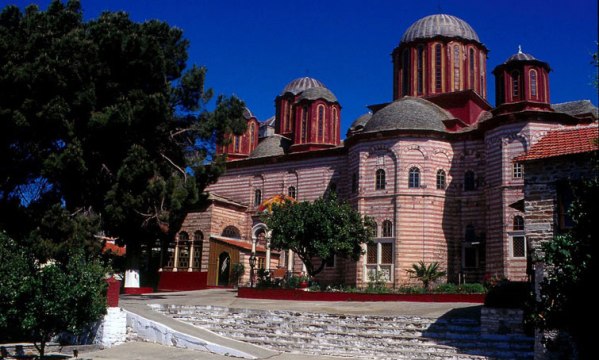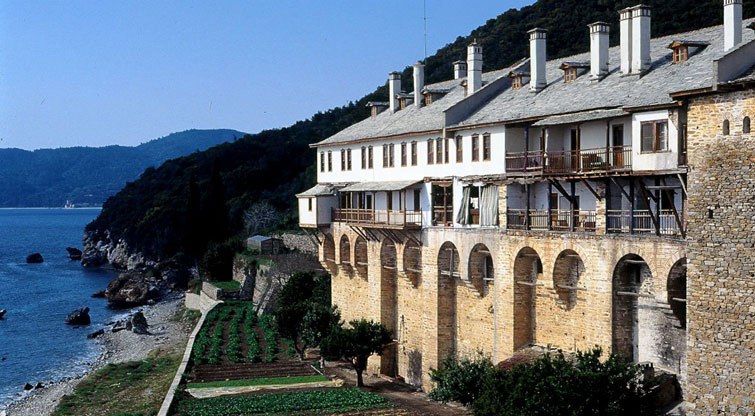
email: arhontariki@imxenophontos.gr
St. Xenophon’s monastery is built by the sea, between Dochiariou and St. Panteleimon’s monasteries, on the western side of Mount Athos. It is dedicated to St. George.
The monastery has two Catholicons – i.e. main churches – dedicated to the holy Great Martyrs George and Demetrius, while its new Catholicon is the largest one among the twenty monasteries on Mount Athos. Moreover, it has 14 chapels, 8 of which are located inside the monastery.

The monastery is first commemorated in the last quarter of the 11th century. Its rise was interrupted by the Fall of Constantinople (1453); then the successive disasters were succeeded by renovations and donations by princes of the Danubian principalities.
Among the notable relics of monastery are included two icons of St. George and Demetrius (11th c.), a small icon depicting the Transfiguration, sacred vessels etc. More than 4,000 books, various documents and c. 300 manuscripts are kept in the library of the monastery, whereas its museum is especially interesting.
The Holy Icon of Theotokos Hodegetria

The icon was located in the Catholicon of the Vatopaidion Monastery. But in 1730, it suddenly vanished, while the doors of the church were shut, and immediately came up in St. Xenophon’s monastery.
Everybody thought that somebody must have secretly stolen it, so the icon was carried back to its place, while the monks in Vatopaidion too stricter security measures and sealed the church. In a while, though, when the church opened for the service, the icon was absent again and soon the news came that it showed up in St. Xenophon’s again, in the same place of its Catholicon.
The fathers in Vatopaidion were convinced of the miracle and decided to resist no more to the will of the Most Holy Theotokos. They ran to St. Xenophon’s to venerate the icon of Theotokos Hodegetria and for a long time they sent oil and wax to her new home. Since then, the fathers of Vatopaidion of St. Xenophon’s jointly commemorate this occurrence.













